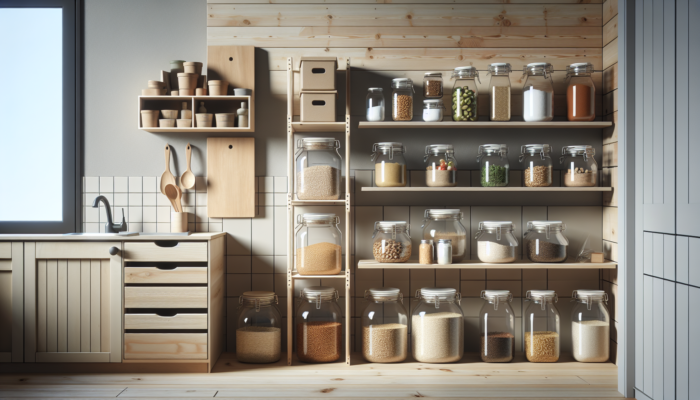Unlocking Cost-Effective Preparedness: Actionable Strategies for Budget-Conscious Survivalists
In the realm of survivalism, budget prepping transcends mere necessity; it embodies a crucial skill that thrives on creativity and innovation. The foundation of effective preparedness is built on thorough planning and the strategic utilization of resources available to you. By harnessing your creative instincts, you can develop a comprehensive survival strategy that safeguards both your finances and your safety. This guide is designed to equip you with essential techniques for mastering prepping while maintaining financial prudence, enabling you to face any challenge with confidence.
Essential Survival Tools: Prioritizing Must-Have Items for Maximum Preparedness

Embarking on your budget-conscious prepping journey starts with a vital first step: pinpointing the essential items necessary for your survival. Prioritizing these fundamental components is crucial for safeguarding your well-being during emergencies. Initiate this process by conducting a thorough risk assessment of your environment, taking into consideration potential threats such as natural disasters, economic downturns, or civil unrest that could jeopardize your safety. With a clear understanding of your vulnerabilities, compile a detailed inventory of key items that will serve as the backbone of your preparedness plan.
The core elements of any effective prepping strategy revolve around securing vital resources like food, water, first aid supplies, and shelter. When selecting food options, focus on non-perishable staples such as canned goods, rice, and pasta. These items provide essential nutrition and have long shelf lives, making them economical choices for your budget. Furthermore, investing in a reliable water filtration system is crucial, as access to clean drinking water is often a life-saving necessity during crises.
Always recognize the importance of first aid supplies. You can assemble a budget-friendly medical kit by purchasing items in bulk or taking advantage of sales at local pharmacies. Essential components should include bandages, antiseptic wipes, and key over-the-counter medications. Lastly, securing a dependable form of shelter is imperative; whether you opt for a tent or a simple tarp, ensure you have a reliable means of protection against harsh weather conditions. By focusing on these critical areas, you will establish a robust foundation for your preparedness plan.
Strategic Budgeting: Effective Financial Management for Your Prepping Journey
Once you've identified your essential items, the next step is to effectively allocate your budget. Understanding precisely how much you can designate each month for prepping is essential. Start by setting aside a specific percentage of your monthly income dedicated to your prepping budget. This disciplined approach will help you remain focused and avoid unnecessary financial strain.
Consider employing the 50/30/20 budgeting model. Designate 50% of your income for essential needs, 30% for discretionary spending, and 20% for savings or emergency funds. Within the ‘needs' category, prioritize procuring your prepping essentials. This may involve securing food and water supplies first, followed by first aid materials and outdoor gear. For the ‘wants' category, think about items that could enhance your prepping capabilities but aren't immediately necessary, such as advanced survival tools or specialty food items.
Moreover, capitalize on discounts, sales, and bulk purchasing opportunities. Many retailers offer loyalty programs or seasonal promotions that can significantly reduce your overall costs. By strategically planning your purchases, you can maximize the effectiveness of your budget while ensuring you acquire the necessary supplies for comprehensive preparedness.
Setting Long-Term Preparedness Goals: Creating Achievable Milestones for Sustainable Readiness
Engaging in budget prepping is a long-term commitment and not a quick fix. Establishing realistic long-term goals is crucial to ensuring your preparedness plan remains feasible. Begin by outlining a timeline that breaks your objectives into attainable milestones. For instance, your initial goal might be to complete a fully stocked emergency kit within the next three months.
As you progress, consider expanding your skillset and knowledge base. This may involve enrolling in courses that focus on survival skills, gardening, or food preservation techniques. Knowledge is an invaluable asset in any prepper’s toolkit, and you can often acquire it at little or no cost through online resources or community workshops.
Additionally, it's vital to regularly assess and adjust your plan. As your circumstances evolve—be it due to financial changes, shifts in family dynamics, or emerging threats—your prepping strategy should adapt accordingly. This flexibility will ensure that you remain prepared without succumbing to financial burdens.
Innovative Food Storage Solutions for Budget-Conscious Preppers

Food storage is a pivotal aspect of prepping that should never be overlooked. However, achieving effective food storage on a budget requires innovative techniques and creative solutions. Here are some clever and economical strategies to protect your food supplies and ensure their preparedness for any emergency.
Bulk Purchasing: Smart Strategies for Economical Food Acquisition
Buying in bulk is one of the most efficient methods to cut food expenses. Purchasing larger quantities often results in lower per-unit prices, leading to significant savings. Identify your staple foods, such as grains, legumes, and canned goods. Many local grocery stores and warehouse clubs offer bulk purchasing options that can drastically reduce costs.
Before diving into bulk buying, evaluate your pantry to avoid accumulating unnecessary items. Create a shopping list based on your existing inventory and adhere to it rigorously. This practice not only curbs impulse purchases but also ensures that you invest in items that you truly need.
Furthermore, explore local farmers' markets or co-ops for fresh produce. Farmers often provide discounts for bulk purchases, especially for seasonal items. Additionally, consider joining a community-supported agriculture (CSA) program, which allows you to buy shares in a local farm's harvest, securing fresh produce at a lower price.
Homemade Food Preservation: Budget-Friendly Techniques for Efficient Storage
Preserving food at home is another excellent tactic to save money while ensuring a steady supply of essentials. Various DIY food preservation methods, such as canning, freezing, and dehydrating, can be easily executed on a budget with minimal investment.
Canning is a time-honored technique that helps you store seasonal produce for long-term use. Affordable canning supplies can often be found at discount retailers or online. If you have access to a garden or fresh fruits and vegetables, canning is a cost-effective way to prevent surplus produce from going to waste.
Freezing is another straightforward method; store fruits, vegetables, and meats in airtight containers or freezer bags. This approach is particularly efficient for preserving food purchased in bulk. If you’re interested in dehydrating, consider investing in a food dehydrator or utilizing your oven. Dehydrated foods are lightweight, have a long shelf life, and are ideal for prepping.
Practicing Stock Rotation: Ensuring Freshness and Usability in Your Food Supplies

Implementing a stock rotation strategy is vital for maximizing the efficiency of your food storage system. Proper rotation ensures that your food remains fresh, thereby minimizing waste. Label each item with the purchase date and store newer items at the back of your pantry or storage area. This method allows you to utilize older items first, maintaining a continuous supply of fresh provisions.
Regularly inspect your food supplies to keep track of expiration dates. A simple checklist can assist you in monitoring what you have and when it needs to be consumed. Incorporate your stock into regular meal planning to ensure that nothing goes to waste.
In addition to stock rotation, consider organizing a ‘prepping party’ with friends or family. This enjoyable community activity can involve sharing surplus food supplies or trading items. Not only does this foster a sense of camaraderie, but it can also help diversify your food storage without incurring extra costs.
Effective Water Management Strategies for Budget-Conscious Preppers: Securing Access to Clean Water
Access to clean water is essential during emergencies, yet it is often a neglected component of budget preparedness. Fortunately, there are several economical strategies to ensure a reliable water supply without straining your finances.
Affordable Filtration Solutions: Cost-Effective Water Purification Options
Investing in a water filtration system is a wise decision for any savvy prepper. Thankfully, there are budget-friendly alternatives that seamlessly fit into your budget. Look for gravity-fed water filters or portable filtration systems capable of providing clean drinking water without requiring electricity.
You might also consider DIY filtration systems using materials like activated charcoal, sand, and gravel. While these homemade setups may not match the effectiveness of commercially available filters, they can serve as a temporary solution during emergencies. Explore various methods to identify one that meets your needs and budget.
Another effective yet inexpensive option is to acquire water purification tablets. These compact tablets can treat large quantities of water and are easy to store. Always keep a backup plan for water purification, as access to clean water may become limited during emergencies.
Rainwater Harvesting: Cost-Effective Techniques for Water Collection
Rainwater harvesting is a clever technique to secure water at minimal cost. Setting up a rainwater collection system can be as simple as placing barrels beneath your downspouts. Ensure you use food-grade barrels and regularly clean your collection system to prevent contamination.
Be sure to check local regulations regarding rainwater harvesting, as some areas have specific guidelines or restrictions. If permitted in your locality, this method can provide a plentiful water source at little to no expense. Harvested rainwater can be utilized for drinking (after proper filtration), irrigation, and other non-potable applications.
Consider investing in a basic filtration system specifically for rainwater to guarantee that the collected water is safe for drinking. Additionally, educate yourself on maintaining your rainwater system to ensure its long-term efficiency.
Water Storage Solutions: Affordable Containers and Strategies
Storing water is just as important as collecting it. Ensure you have a variety of containers suitable for effective water storage. While specialized water storage containers are available, you can also repurpose food-grade plastic containers, such as soda bottles, for this purpose. Make sure all containers are thoroughly cleaned and sanitized before use.
A general rule of thumb is to store at least one gallon of water per person per day for a minimum of three days. However, if you can secure more, that’s even better. Consider storing water in different locations throughout your home to ensure accessibility during an emergency.
Regularly check your water storage for leaks or contamination. Rotate your water supply every six months to maintain freshness. This straightforward practice can protect you from potential health risks during critical situations.
Affordable Shelter and Safety Solutions for Preppers: Building a Secure Environment
Establishing a safe and secure shelter is paramount in any prepping strategy. However, this doesn’t have to be an expensive endeavor. With creativity and resourcefulness, you can implement effective safety measures without stretching your budget.
Cost-Effective DIY Shelters: Constructing Affordable Emergency Housing
Having a reliable emergency shelter is crucial in the aftermath of a disaster. Building a DIY shelter can be a budget-friendly solution. Start by researching various shelter types, such as tarp tents, debris huts, or lean-tos. Many of these designs require minimal materials and can be constructed using items you may already have.
Gather materials by utilizing local resources. Fallen branches, tarps, and even old blankets can be repurposed to create functional shelters. Always practice assembling your shelter to ensure you’re fully prepared to do so in a real-life emergency.
Additionally, consider investing in a lightweight emergency tent. While it may seem like an unnecessary expense, it can serve multiple purposes, such as providing shelter during emergencies, camping trips, or outdoor activities.
Enhancing Home Security: Strengthening Your Property on a Budget
Improving your home’s security against potential threats doesn’t have to be financially burdensome. Begin by assessing your property for vulnerabilities. Identify weak points, such as doors and windows, and consider reinforcing them with basic security measures.
Installing deadbolts on doors and sturdy locks on windows is a cost-effective way to enhance security. Furthermore, think about adding motion-sensor lights around your property to deter potential threats. These lights are often available at discount stores and are easy to install.
Another effective strategy is to create a ‘safe room’ within your home. This could be a closet or a small room stocked with supplies. Ensure it has a solid door and minimal windows, allowing you to secure yourself and your essential items during emergencies.
Assembling an Emergency Kit: Creating a Budget-Friendly Survival Collection
A well-prepared emergency kit is an integral part of your prepping strategy. The good news is that assembling a budget-friendly kit can be a gradual process. Start with a durable backpack or container to organize your items.
Fill your kit with food, water, first aid supplies, and other essential items. Consider adding multi-tools, flashlights, and batteries. Many of these supplies can be sourced from discount outlets or during sales, allowing you to build your kit without overspending.
Don’t forget to customize your emergency kit to your specific needs. If you have family members with special requirements, such as children or pets, ensure you also include the necessary items for their care. Regularly review and update your kit to guarantee that all supplies remain fresh and functional.
Health and First Aid Essentials for Budget-Conscious Preppers: Ensuring Well-Being
Maintaining your health during emergencies is critical for survival. Stocking up on health and first aid essentials doesn't have to be costly when prepping on a budget. Here are some practical strategies to ensure you’re well-equipped.
Essential First Aid Supplies: Building a Cost-Effective Medical Kit
A well-stocked first aid kit is a vital necessity for any prepper. Thankfully, you can assemble a comprehensive kit without breaking the bank. Start by purchasing a basic first aid kit from a discount store, then enhance it with additional items tailored to your specific needs.
Include band-aids, antiseptics, gauze, adhesive tape, and over-the-counter medications. These items are often available in bulk, allowing you to save money while ensuring you have sufficient supplies on hand.
Depending on your unique situation, consider adding personal medications or specialized items, such as allergy medications or diabetic supplies. Make it a habit to regularly check your kit for expiration dates and replenish items as needed to maintain its effectiveness.
Exploring Natural Remedies: Affordable Alternatives for Health Management
Natural remedies can serve as budget-friendly alternatives to conventional medications. Stocking essential herbs and supplements can help address various health issues without straining your budget. Common affordable options like garlic, ginger, and honey possess antibacterial and anti-inflammatory properties.
Consider cultivating your herbs at home, as this provides a continuous supply and saves you money over time. This sustainable practice empowers you with knowledge about natural healing methods that can be invaluable during emergencies when access to modern medicine may be restricted.
Additionally, educate yourself on basic home remedies for common ailments. Numerous free resources are available online to help you effectively utilize natural ingredients. This knowledge can be crucial in emergencies when conventional medical resources are not readily accessible.
Prioritizing Mental Health: Strategies for Well-Being During Stressful Times
Mental health often takes a backseat during crises, yet it is equally important as physical well-being. Incorporating strategies to maintain mental health during emergencies is essential. Consider practicing mindfulness techniques, such as meditation or deep-breathing exercises, as part of your daily routine. These methods are free and can significantly alleviate stress levels.
Building a support network is also vital. Connect with friends, family, or local community groups to share experiences and provide support. Having someone to confide in can help ease feelings of isolation and anxiety during challenging times.
Finally, allocate time for activities that bring you joy and relaxation. Whether it's reading, gardening, or crafting, engaging in hobbies can provide much-needed distractions and foster mental resilience during difficult situations.
Energy Solutions for Thrifty Preppers: Powering Your Preparedness
Accessing a reliable energy source is crucial for any prepper. Fortunately, several budget-friendly energy solutions can power your home without straining your finances.
Solar Energy: Affordable Methods to Harness the Power of the Sun
Solar energy has become increasingly accessible and affordable for those prepping on a budget. While the initial investment in solar panels may seem daunting, numerous low-cost options exist for those willing to explore.
Consider starting small with solar-powered chargers or lights. These devices can help reduce energy costs while providing a reliable power source during emergencies. As you become more familiar with solar technology, you can gradually expand your system.
Look for local or state incentives for installing solar energy systems. Many governments offer financial assistance for renewable energy installations, which can help offset initial costs and make solar energy a viable option for your prepping strategy.
DIY Generators: Crafting Your Own Reliable Power Source
If you enjoy hands-on projects, consider building your generator. DIY generators can be made from various materials and provide a dependable power source during outages. Research different types of generators, such as bicycle generators or those powered by alternative fuels, and select a design that aligns with your skills and requirements.
You can often acquire low-cost materials or repurpose items from your home. Constructing your generator allows you to customize it to meet your specific energy needs, ensuring you have power when it’s most critical.
Conserving Energy: Effective Strategies for Reducing Power Usage
Minimizing your energy consumption is a practical approach to preparing on a budget. Begin by conducting an energy audit of your home to identify areas for improvement, such as sealing drafts, utilizing energy-efficient appliances, and switching to LED lighting.
Adopt energy-saving habits, such as unplugging devices when not in use, utilizing natural light whenever possible, and optimizing your thermostat settings. These small adjustments can lead to substantial savings over time, allowing you to allocate funds towards other prepping essentials.
Additionally, consider investing in energy-efficient appliances during sales or when replacing old devices. Although the initial investment may seem higher, the long-term savings on your energy bills will make it worthwhile.
Building Community and Networking: Enhancing Your Budget-Conscious Prepping
Creating a network of like-minded individuals can significantly enhance your prepping efforts while keeping costs manageable. Networking can provide valuable resources, skills, and support during emergencies.
Finding Local Prepper Communities: Collaborating for Enhanced Knowledge
Numerous prepper communities and groups are available for you to join to expand your skills and insights. Start by researching local meetups or online forums to locate groups in your area. Many communities offer free or low-cost workshops and training sessions covering a variety of prepping topics.
These groups can grant access to invaluable resources, information, and networking opportunities. Additionally, engaging with fellow preppers fosters the exchange of ideas, trading supplies, and learning from one another’s experiences, ultimately enhancing your preparedness strategy.
Don’t hesitate to attend local events, fairs, or conventions focused on preparedness. These gatherings can serve as excellent venues for meeting others who share your interests and gaining insights from seasoned preppers.
Skill Sharing: Collaborating to Teach and Learn Valuable Skills
Skill sharing is an invaluable aspect of community networking. Consider exchanging skills with fellow preppers, which can provide you with new knowledge without incurring costs. For example, if














